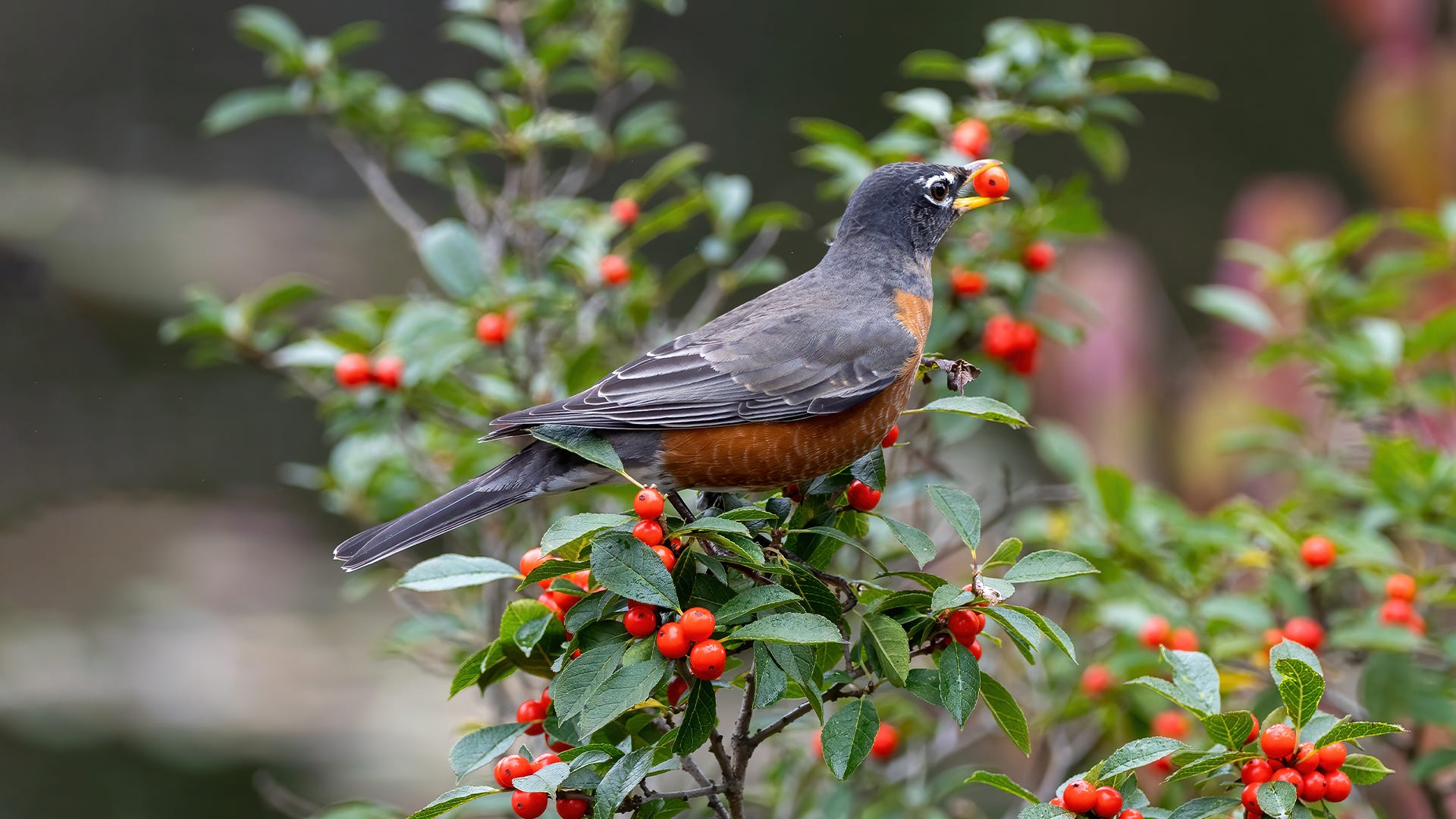
As autumn food supplies dwindle, it is critical that many of our favorite backyard birds migrate. They need to get far from the impending ice and snow and make their way to southern winter ranges. There, foods are much more plentiful. But if foods are still abundant in birds’ northern ranges, will the birds miss migration? Will our clean, generous feeders keep birds from migrating, exposing them to hazardous winter weather and food scarcity?
The Fear of Feeding Birds in Fall
Birds may seem to visit feeders more frequently in fall, which can be worrying. There are different schools of thought on taking down bird feeders after Labor Day, or at some predetermined point during the autumn to encourage birds to move along on their migratory routes. What many birders don’t realize, however, is that birds alter their feeding patterns in autumn specifically to prepare for migration.
See also: Make Your Backyard a Stopover Site for Fall’s Migrating Birds
In the weeks prior to setting forth on their travels, birds’ hormones shift and they are compelled to overeat and gain weight. Some bird species may even double their weight before migration begins. This extra fat is essential fuel for that journey. The birds will not be stopping to feed as frequently along the way. So, while it may seem that backyard birds are visiting feeders more during late summer and early fall, they are doing so to prepare to migrate, not to avoid migration.
It is also important that birders take their favorite birds’ full ranges into account for fall feeding and migration. Individual migratory birds that spent the summer around a specific yard or feeding station may migrate earlier in the season, only to be replaced by birds from further north. Because it can be nearly impossible to distinguish different individual wild birds of the same species, it may seem as though the birds aren’t migrating. In fact, the entire population is gradually making its way south.

Birders also have to consider visiting birds that don’t migrate at all. Many jays, woodpeckers, chickadees, quail, titmice, cardinals, and mockingbirds never shift
ranges between seasons. Those birds will still visit feeders. If you remove feeders because of migration concerns,
non-migratory birds may suddenly find themselves without the food sources they have relied upon.
Fall Bird Food Sources
Autumn is a time of great natural food abundance. With so many natural foods widely available in different habitats, birds are well able to find plentiful food with or without feeders. It is estimated that wild birds only get 10-15 percent of their food from feeders. The rest is from naturally available resources. In that case, whether feeders are available or not makes little difference to how food impacts birds’ migration. Many birds begin migrating even while natural fall foods are at their peak, yet birds still leave anyway.

Why Birds Actually Migrate
In fact, food resources are only a small factor in determining when birds migrate. The most compelling reason birds migrate when they do is because of photoperiod—the daily amount of sunlight and how the sun’s angle to the earth changes through the seasons. As days get shorter, birds get restless and will eventually migrate, even if there is plenty of food available.
Other factors such as changing weather patterns, climate shifts, and predator activity also slightly influence why and when birds migrate. Still, daylight levels are the biggest factor.
How Feeding Birds Helps Migration
Instead of hindering migration by encouraging birds to stay put, bird feeders filled with nutritious meals can actually help migrating birds. Energy-rich foods help birds gain weight more quickly in late summer and early fall. To help birds make the most of every feeder in your yard:
- Switch to high-fat, high-sugar, and high-calorie foods in late summer, such as shelled peanuts, suet, nectar, and Nyjer seed
- Keep all feeders filled and available for at least 2-3 weeks after the last bird has been seen visiting so any migratory stragglers can still feed
- Continue to clean feeders regularly to avoid exposing birds to bacteria or fungus that could make them sick and hurt their migration
- Avoid pruning trees and shrubs in late summer or fall so there is more shelter available, and any fruits on the plants will still be there
- Keep your yard bird-friendly with water, shelter, and colors that attract birds to alert passing migrants that they are welcome
- Avoid raking leaves so doves, sparrows, quail, and other ground-feeding birds can easily forage for seeds, nuts, and insects in the leaf litter
Instead of hindering birds’ migration, feeding birds in fall can actually be very beneficial and helpful. Migratory birds with access to a clean, healthy feeding station can be better prepared for their long journeys, and birders will enjoy seeing passing visitors throughout the season.
See also: 12 Amazing Facts You Should Know About Hummingbird Migration






